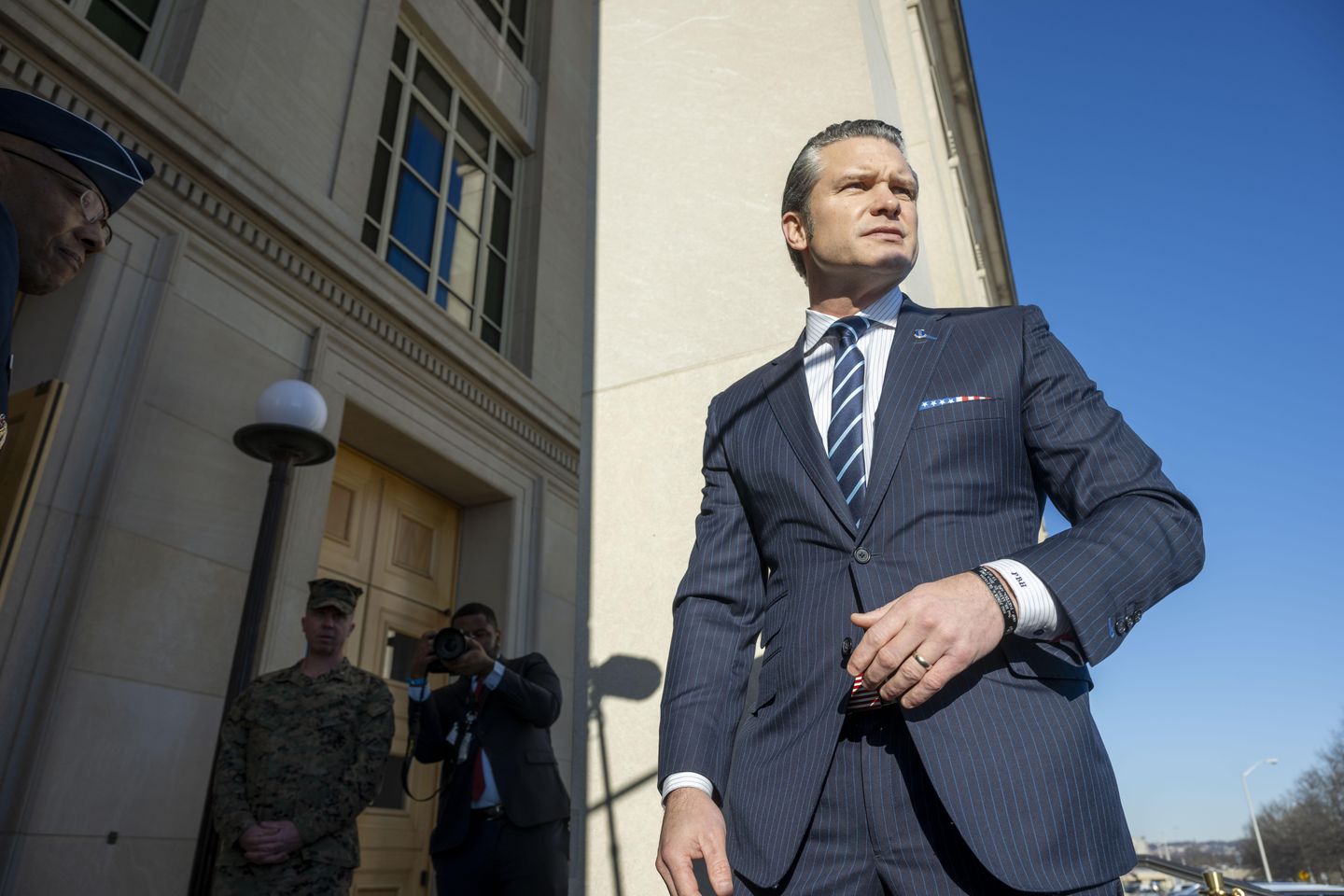
Defense Secretary Pete Hegseth this week ordered a 20% across-the-board reduction in the number of four-star generals and admirals as part of what he said was the most comprehensive review of America’s military command structure since the Goldwater-Nichols Act of 1986, which reorganized the Pentagon.
On Monday, Mr. Hegseth noted that 17 four- and five-star generals and admirals led 12 million Americans in uniform during World War II. Today, 44 generals and admirals wear four stars in a military of 2.1 million.
“We’re going to shift resources from bloated headquarters elements to our warfighters,” Mr. Hegseth said on X. “More generals and admirals do not equal more success.”
He said the military must cultivate “exceptional senior leaders” who drive innovation and operational excellence while unencumbered by bureaucratic layers that hinder their effectiveness.
“A critical step in this process is removing redundant force structure to optimize and streamline leadership by reducing excess general and flag officer positions,” Mr. Hegseth wrote in his order.
He also ordered a 20% reduction in the number of general officers in the National Guard and a further 10% cut of generals in the active duty ranks as the process continues.
Mr. Hegseth said the decision to winnow the ranks of the most senior military officers was not a “slash and burn” exercise meant to punish anyone.
“This has been a deliberative process working with the Joint Chiefs of Staff with one goal: Maximizing strategic readiness and operational effectiveness by making prudent reductions in the general and flag officer ranks,” he said.
The second phase of the plan will result in a strategic review of the military’s unified command structure, Mr. Hegseth said.
The Goldwater-Nichols Act made the chairman of the Joint Chiefs of Staff the principal military adviser to the president, but also established unified combatant commands, such as Central Command, that would have overall responsibility for military operations in their geographic areas. The service chiefs, such as the Army chief of staff and chief of naval operations, would be in charge of training, maintaining and equipping the forces but would not have operational control.
Mr. Hegseth wrote in his new order, “Through these measures, we will uphold our position as the most lethal fighting force in the world, achieving peace through strength and ensuring greater efficiency, innovation and preparedness for any challenge that lies ahead.”












